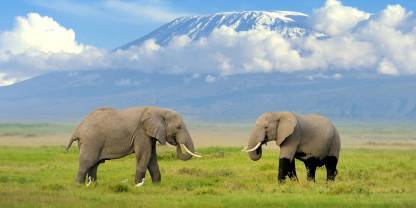Amboseli National Park is a good birding destination with around 500 species recorded. The swamps are great for egrets, herons, pelicans, lapwings, cranes and other waterbirds. In recent years, Enkongo Narok Swamp has filled to become a lake and it often hosts impressive flocks of greater and lesser flamingo. These are best seen from the causeway between junctions 25 and 26. Grassland specials include the localized Pangani longclaw, as well as the kori, Hartlaub’s and white-bellied bustard. holds dry-country specials, such as steel-blue whydah, white-bellied go-away-bird and Von der Decken’s hornbill.
Birding Specials Treats for Avid Birders
(NE) near-endemic = lives in Kenya and neighboring countries- African swamphen
- Common ostrich
- Common redshank
- Dickinson’s kestrel
- Goliath heron
- Greater flamingo
- Hartlaub’s bustard
- Lesser flamingo
- Long-toed lapwing
- Pangani longclaw
- Rufous chatterer
- Rufous-bellied heron
- Spike-heeled lark
- Steel-blue whydah
- Taveta golden weaver (NE)
- Von der Decken’s hornbill
- Water thick-knee
- White-bellied bustard
- White-bellied go-away-bird
- Yellow-necked spurfowl
Best Time for Bird Watching
Amboseli is a year-round bird-watcher’s paradise, with most of its more alluring species and visible throughout the year. In recent times, large flocks of flamingo have usually been present year-round, with numbers peaking in the two rainy periods (March to May and November to December). visit from November to April. The best months for birding are from December to March. Rain is more likely to disrupt your activities in November and April.

